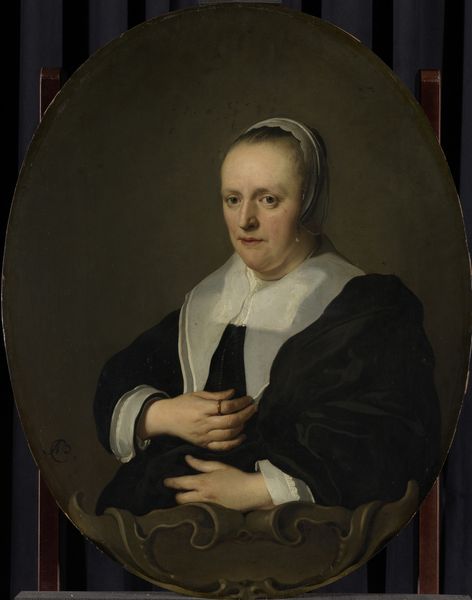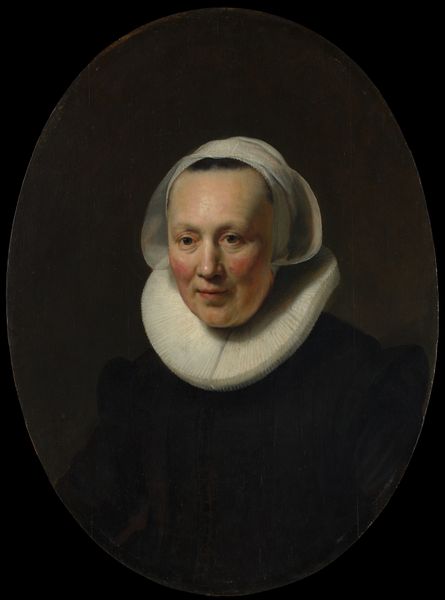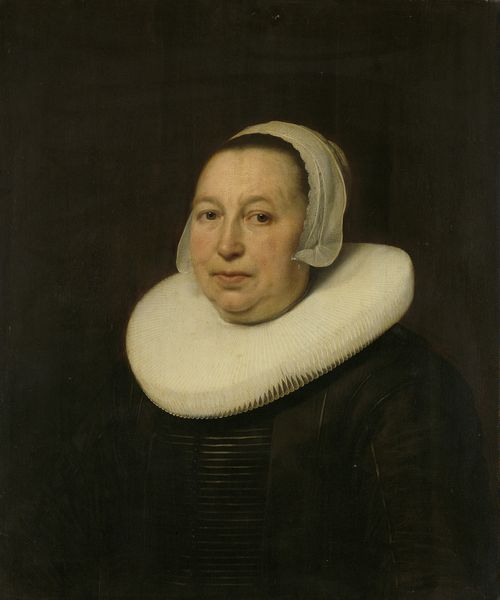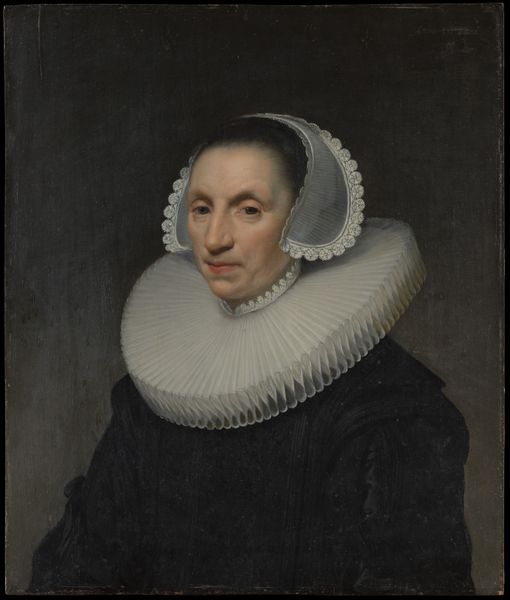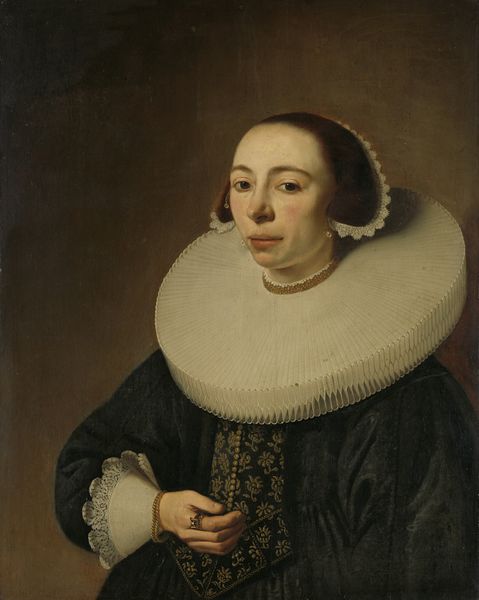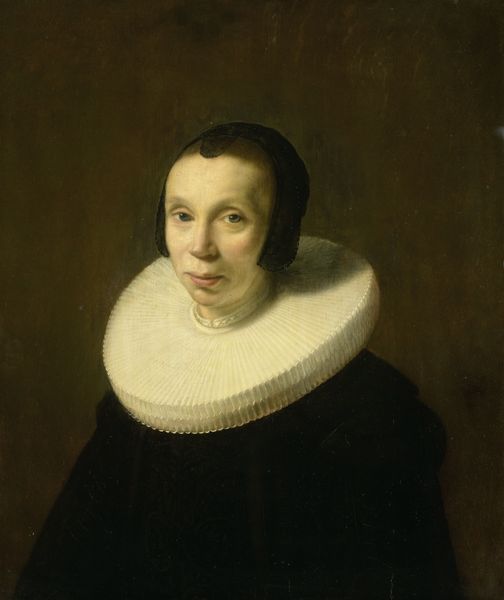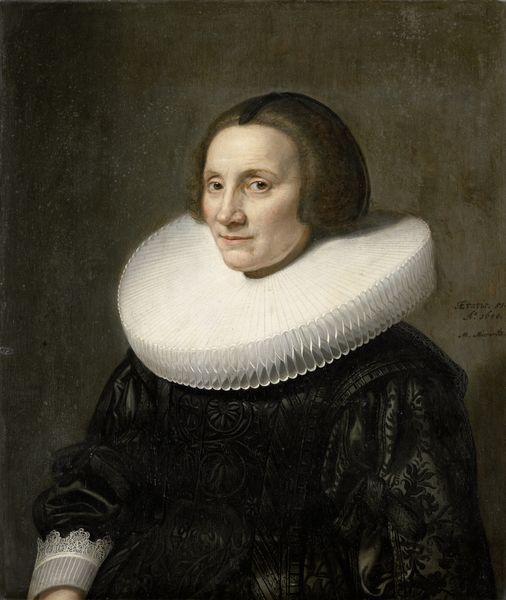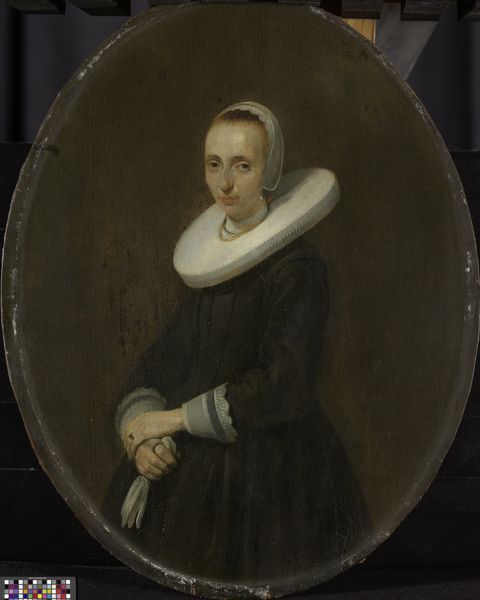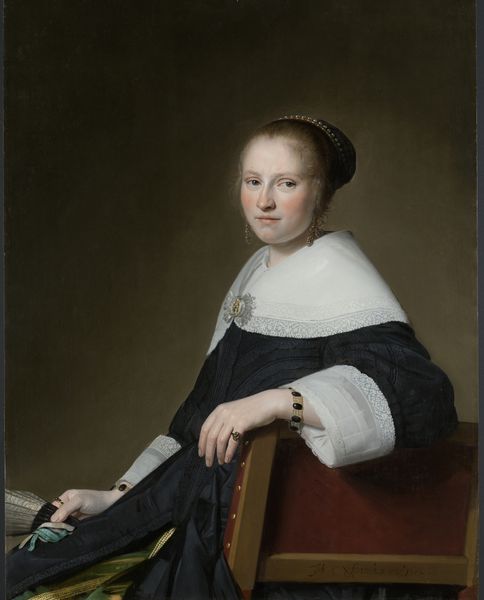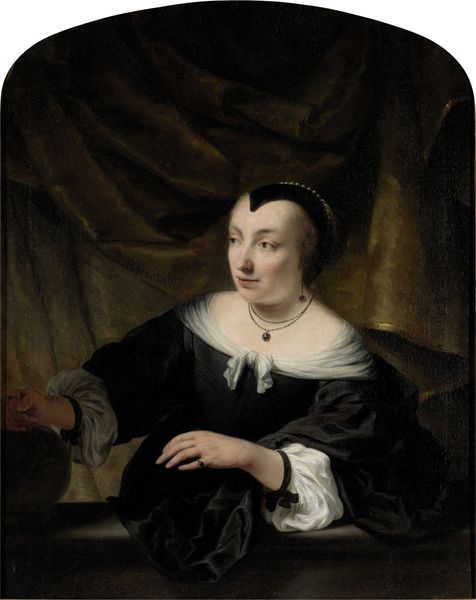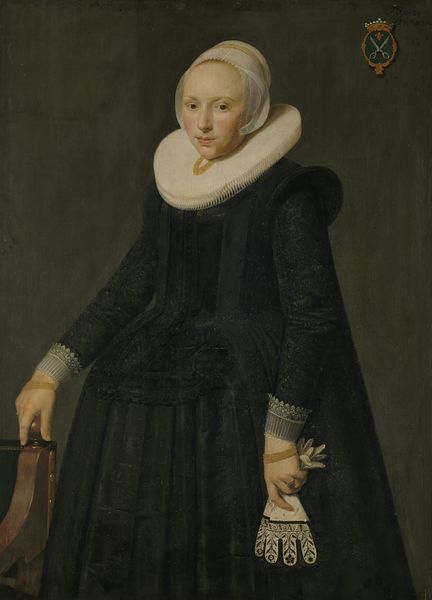
painting, oil-paint
#
portrait
#
baroque
#
painting
#
oil-paint
#
genre-painting
Dimensions: 49 3/8 x 37 3/4 in. (125.4 x 95.9 cm)
Copyright: Public Domain
Curator: This is Jürgen Ovens’ “Portrait of a Woman,” painted around 1650. You can find it here at the Metropolitan Museum of Art. Editor: The first thing I notice is the stark contrast – the woman's black dress against the white ruff. There’s a tactile quality to the fabric that makes you want to reach out and touch it, wouldn't you say? Curator: The ruff immediately evokes a certain era, a formality of dress and presentation meant to communicate status. It’s like a halo, really, framing her face with that pure white circle. And then, there's the slight, knowing smile playing on her lips. Is it complacency, or something else? Editor: Yes, but consider the labour involved! Each fold carefully starched and arranged. That wasn't simply "status"; it was someone's painstaking work. And the black dye for the dress–how many hands touched that fabric before it even became clothing? Curator: Of course, you are right about labor. But I wonder, what did this severe but delicate costume communicate to contemporaries? The rosary might suggest devoutness, a closeness with God. While she also holds delicate gloves, perhaps symbols of care and status, further amplified by that expensive and richly dyed red tablecloth. It all makes her rather compelling. Editor: Indeed, the rosary points toward craft traditions – consider the beads themselves, blown or cast? And think about the oil paint – where did the pigments come from? These material components, these traces of labor and resources, are inseparable from any concept of the so-called spiritual aspects you mention. Curator: It’s an interesting challenge – considering the spiritual value with labor, materials, and all things temporal that can have spiritual counterparts. What a fascinating painting. Editor: Absolutely, it reminds me of how interwoven the material and symbolic realms were for individuals in that period. I will certainly reflect on that.
Comments
No comments
Be the first to comment and join the conversation on the ultimate creative platform.
